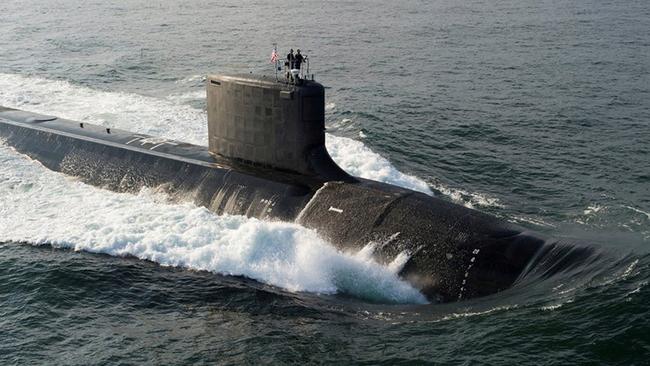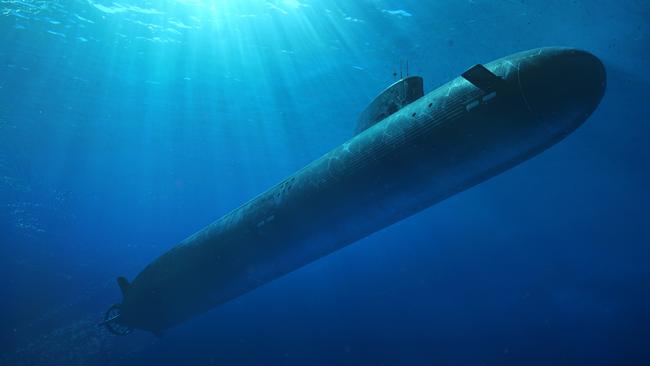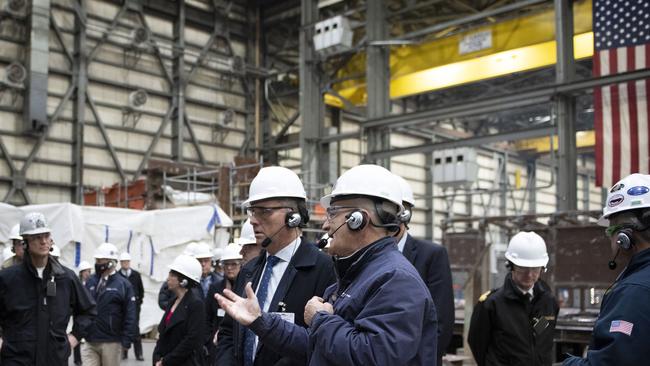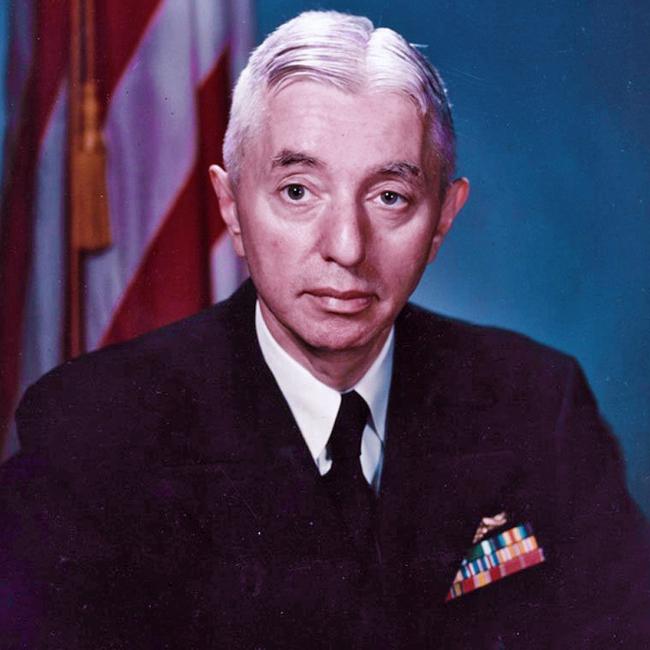Akerman: Australia must plunge into the deep end of nuclear technology immediately
Australia is to receive three nuclear-powered submarines within the next 10 years, but we need to begin preparing for them now, writes Piers Akerman.
Opinion
Don't miss out on the headlines from Opinion. Followed categories will be added to My News.
The AUKUS deal means we must plunge into the deep end of nuclear technology immediately and there is nothing to indicate any appreciation in Canberra of the massive but essential cultural change necessary.
We are totally unprepared for this challenge.
Further, the government’s proven inability to deal with technological change, let alone the Defence department’s continual failure to grasp the basic concepts of procurement contracts, does not bode well for the $268 billion to $368 billion project.
The Smith-Houston defence review is expected to be released within days but is unlikely to deal with the scope of transformation needed.
Under the AUKUS arrangement initiated by the conservative Scott Morrison government, but signed off by the Labor’s Anthony Albanese, Australia is to receive three Virginia-class nuclear-powered submarines within the next 10 years and then build up to eight of our own vessels.

To help me understand the task, I consulted two senior US figures with deep (no pun intended) experience in nuclear submarines.
Following meetings with US and Australian naval attaches in Canberra and Washington in recent weeks, former nuclear submarine commander Noel Gonzalez, a serious expert in key military rapid development technologies used in the US submarine fleet, and Mack Hellmann, an expert in undersea acoustics, marine engineering and undersea systems and an adviser to the Massachusetts Institute of Technology and Northrop Grumman Undersea Systems, among other organisations, laid out their thoughts plainly and constructively.

Both are now with the leadership team at Argus, a joint venture between an Australian company and a US holding company, that proposes to leverage its US nuclear submarine experience with technology-transfer experience to assist in the development of the much-needed industrial base that will enable Australia’s nuclear submarine program.
Both men spoke frankly about the problems the US and the UK (our AUKUS partners) experienced with their nuclear submarine programs and warned that we risk making the same mistakes made in the 1950s unless we adopt a wholly new model.
Although Australia has had a small operating nuclear reactor at Lucas Heights for 65 years, the operation, let alone building, of a nuclear fleet, needs a total rethink of our nuclear culture and we need to begin preparing now.
The first step in the process would seem obvious, actively encouraging students to take STEM (science, technology, engineering and mathematics) courses and then making nuclear engineering in the navy an attractive career.

The US doesn’t have any spare crew capacity to man Australian vessels. Set a culture of training Australians now, bearing in mind that nuclear subs carry 130-140 personnel, with up to 170 aboard if trainees are also deployed.
For that matter, the US doesn’t have any spare submarine building capacity either, so we will be in line with the US navy for boats as they come off the line and out of refit, and the two US yards building submarines aren’t meeting their targets now.
The latest estimate of the progress on the newest submarine, the Columbia-class, is that it has lost 2.2 million unrecoverable work hours.
One yard, General Dynamics’ Electric Boat company at Groton, Connecticut, is short 7000 workers.
To prevent being captive to the US or the UK (or, God forbid, the French), and to assist in meeting the needed capacity, Australia must begin building a SOTA (state of the art) nuclear certified manufacturing supply base now and avoid being tied to any global conglomerate.
It should go without saying that any involvement by Thales, the French-government defence organisation already deeply engaged in Australia, must be banned as the French simply cannot be trusted whatever former Liberal PM Malcolm Turnbull may dream.

The priority is to build a digital prototype nuclear submarine to begin bringing personnel up to speed. Then we must ensure we can supply uninterrupted power (which means forget variable wind, solar and short-lived batteries) to future nuclear sub ports, and we must be able to provide pure, uncontaminated water for the reactors.
We must have the equipment to monitor radiation levels, and above all, the quality of parts manufactured here must be “submarine safe”, a level equivalent to that required for elements in the space shuttles.
Remember, we face an uncertain world in which two totalitarian leaders, China’s Xi and Russia’s Putin, have shown they don’t care about the West’s rules of war.
We must meet our obligations to universal freedom and assist in providing some deterrent to these dictators.
In the world of nuclear submarines, one name stands out globally – Admiral Hyman G. Rickover, the father of the US nuclear navy.
Safety was this visionary’s byword and he ensured that, within the limits of the existing technology, his boats were safe and manageable for their crews.
Who will be Australia’s Rickover and usher in our much-needed nuclear age?





